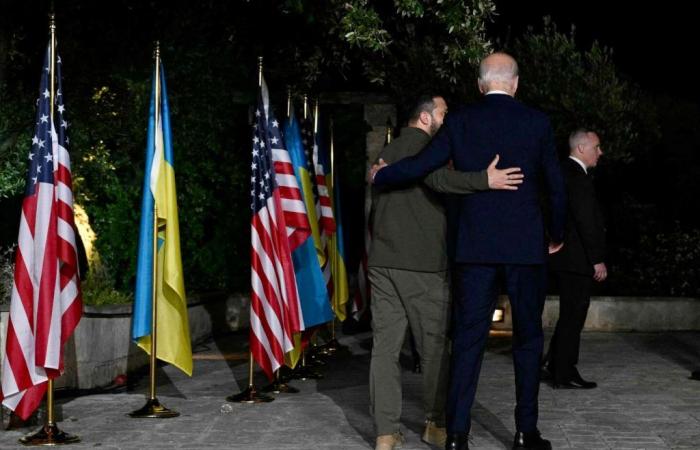No survival or military success of Ukraine without financial assistance. Meeting on Thursday June 13 in a luxurious hotel complex in Borgo Egnazia, near Bari, in the south of Italy, the leaders of the G7 found an agreement in principle to put in place, by the end of the year , a loan of 50 billion dollars (46.56 billion euros) granted to kyiv. This system has been discussed at length in recent months by the seven richest democracies on the planet (Germany, Canada, United States, France, Italy, Japan, United Kingdom, as well as the European Union). The idea is to activate this new credit line before the possible return of Donald Trump to the White House, in January 2025.
In an unprecedented way, this loan would be repaid over the years thanks to the interest generated by Russian assets immobilized abroad. But the project is causing friction between Washington, Paris and Berlin. The G7 finance ministers will have to overcome these differences to establish the practical arrangements. Without waiting for details, Joe Biden spoke, alongside Volodymyr Zelensky, of a “historic agreement”. “It is right that Russia pays”, underlined the Ukrainian president, invited to the summit, while asking his allies to accelerate their arms deliveries. “ This is a signal that financial aid to Ukraine will cost European taxpayers nothing, since it will be financed by interest generated by Russian assets.welcomed the President of the European Commission, Ursula von der Leyen.
In recent months, the countries of the European Union (EU) have resisted pressure from the United States and Ukraine to purely and simply confiscate Russian assets frozen on the Old Continent – some 300 billion euros – in order to finance Ukraine’s war effort and its reconstruction. For them, there is no question of taking control of these assets still held by Moscow. On the other hand, the Twenty-Seven took a first step by adopting, at the beginning of May, an agreement to seize the income coming from these assets, for an annual amount of between 2.5 billion and 3 billion euros. Sums first intended this year, according to EU states, to finance European arms deliveries to kyiv.
Read also | Article reserved for our subscribers War in Ukraine: US plan to isolate Russian war economy from Chinese support
Add to your selections
Addiction
The countries of the European Union must develop a mechanism to permanently freeze the Russian assets concerned, while the sanctions have so far been renewed every six months, at the risk of being blocked by a country like Hungary. While the United States is ready to advance the promised sums, as are Canada and the United Kingdom, France and Germany are still wondering about their possible participation in the loans. French officials suggest instead approaching the EU.
You have 58.74% of this article left to read. The rest is reserved for subscribers.







